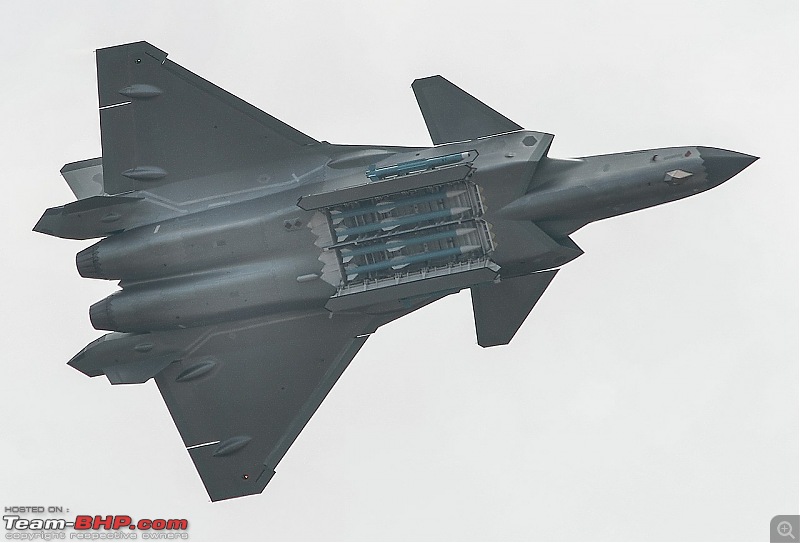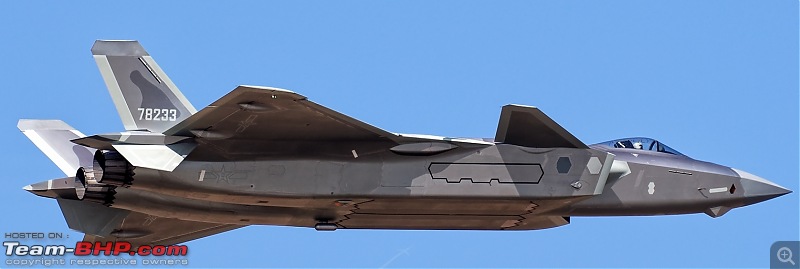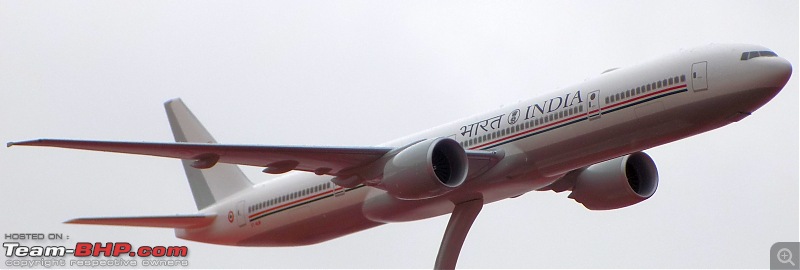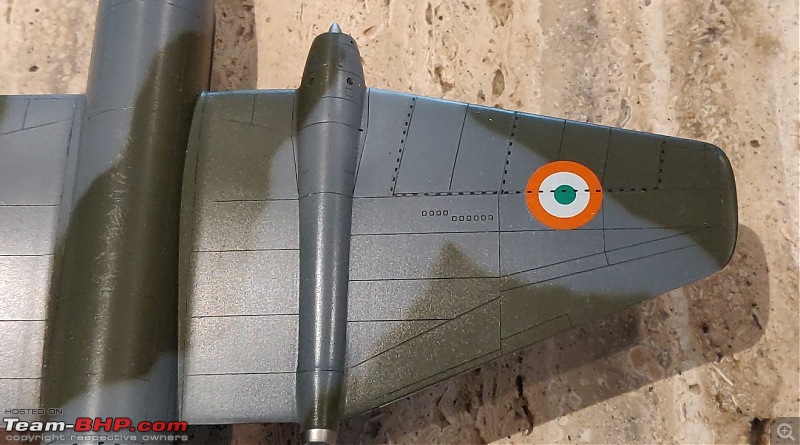1:144 Chengdu J-20 Mighty Dragon S/N 78233 , 172nd Air Brigade, PLAAF (AF1)
Like it or not, one has to grudgingly admit the Chinese are way ahead of us in terms of aircraft manufacturing & technologies, specifically 5th generation jets. It is well known the skills/tech they acquired were stolen, borrowed, hacked, cloned - you can call it whatever, but today they have something that none in the neighborhood have - indigenous & operational frontline stealth fighters!!!
J-20s were deployed at a PLAAF forward base during the Ladakh standoff and may still be there.
Designwise, it is clear copy & mix of F-22, F-35 and quite interestingly the MiG 1.44 & the very fictional MiG-31 Firefox!!!!
The Chengdu J-20 (Chinese: 歼-20; pinyin: Jiān-Črlíng), also known as Mighty Dragon (Chinese: 威龙; pinyin: Wēilóng), is a single-seat, twinjet, all-weather, stealth, fifth-generation fighter aircraft developed by China's Chengdu Aerospace Corporation for the People's Liberation Army Air Force (PLAAF).The J-20 is designed as an air superiority fighter with precision strike capability;.
The J-20 made its maiden flight on 11 January 2011, and was officially revealed at the 2016 China International Aviation & Aerospace Exhibition.The aircraft entered PLAAF service in March 2017.
The J-20 is now believed to be serving with three PLAAF units, including at the Flight Test and Training Base at Dingxin, also known as the 176th Brigade, and the Flight Training Base in Cangzhou, referred to as the 172nd Brigade.
In early 2019, the first regular operation PLAAF unit to receive J-20s was the 9th Brigade at Wuhu, in the Eastern Theatre Command. An image released by the PLAAF showed a J-20 with the serial 62001, the first official acknowledgement that a new unit had been formed.
It is unclear how many have been delivered, as the PLAAF is keen to keep this secret, but at least 13 different serials have been identified.
The J-20 is the world's third operational fifth-generation stealth fighter aircraft after the F-22 and F-35.
The jet made its first public display at Zhuhai Air show in November 2016, but in November 2018 a three ship formation of J-20s were noted. Unsurprisingly there was no J-20 on the ground, but during the opening ceremony there was a glimpse of the J-20’s maneuvrability. Airshow spectators witnessed the three 172nd Regiment jets sweep by, with one (78231) pulling up as it passed the crowd and disappeared. The remaining pair (78232 and 78233) remained to demonstrate their formation skills with the spectacle of vapour pouring off the top of the wings. Eventually 78233 was left to display on its own exhibiting its stealthy look combined with all over jagged edges.
Initial J-20s are being powered by an upgraded Russian Saturn AL-31 engines and not the WS-15 that was originally intended to power them. Issues with the latter has meant that a stopgap solution had to be found so the aircraft could be pushed into service in 2017, well ahead of schedule, because of increasing security challenges in the region.
In late December images appeared of new J-20s modified with the Shenyang WS-10B Taihang engine as a stop-gap for the original WS-15 powerplant. The latter cannot provide the thrust-to-weight ratio to push the J-20 to supersonic speeds, without the use of afterburners.
The WS-10B features saw-toothed exhaust petals and is believed to power a handful of J-20s, as opposed to the AL-31 that has flush exhaust petals. The J-20 is thought to be equipped with an AESA radar, and at Zhuhai, a chin mounted electro optic sensor was evident, while it has been reported that there are six electro-optic apertures positioned around the aircraft, that form a passive detection system.
The J-20's internal weapon bay is capable of housing both short and long-range air-to-air missiles (AAM; PL-9, PL-12C/D & PL-15 – PL-21) while the two smaller lateral weapon bays behind the air inlets are intended for short-range AAMs (PL-10). These side bays allow closure of the bay doors prior to firing the missile, thus allowing the missile to be fired in the shortest time possible as well as enhancing stealth. The J-20 is reported to lack an internal autocannon or rotary cannon, suggesting the aircraft is not intended to be used in short range dogfight engagements with other aircraft but engage them with from long standoff ranges with missiles such as the PL-15 and PL-21.

While the fighter typically carries weapons internally, the wings include four hardpoints to extend ferrying range by carrying auxiliary fuel tanks. However, much like the F-22, the J-20 is unlikely to carry fuel tanks on combat missions due to its vulnerability in such a configuration, thus this configuration remains valuable for peacetime operations, such as transiting between airbases.
The aircraft is equipped with a retractable refueling probe embedded on the right side of the cockpit, to help the fighter to maintain stealth while flying greater distances










J-20 78233:

 (2)
Thanks
(2)
Thanks

 (4)
Thanks
(4)
Thanks
 (7)
Thanks
(7)
Thanks
 (2)
Thanks
(2)
Thanks

 (6)
Thanks
(6)
Thanks

 (1)
Thanks
(1)
Thanks
 (1)
Thanks
(1)
Thanks

 (1)
Thanks
(1)
Thanks
 (1)
Thanks
(1)
Thanks
 (4)
Thanks
(4)
Thanks
 (4)
Thanks
(4)
Thanks

 (4)
Thanks
(4)
Thanks
 (2)
Thanks
(2)
Thanks





















 If I wear only my hat as an enthusiast of everything that flies then I agree the Chinese are building and have succeeded in building a whole eco-system of design-testing-manufacture for all things to do with warbirds from engines to avionics to metallurgy to weapon munitions. There material may not be as good as the West but in 10 to 15 years they will catch up at the current pace. I'll refrain from comparing them with us or I'll start emitting smoke. So congratulations. May your Wing grow.
If I wear only my hat as an enthusiast of everything that flies then I agree the Chinese are building and have succeeded in building a whole eco-system of design-testing-manufacture for all things to do with warbirds from engines to avionics to metallurgy to weapon munitions. There material may not be as good as the West but in 10 to 15 years they will catch up at the current pace. I'll refrain from comparing them with us or I'll start emitting smoke. So congratulations. May your Wing grow. . Stunning work as always, basuroy.
. Stunning work as always, basuroy.











































